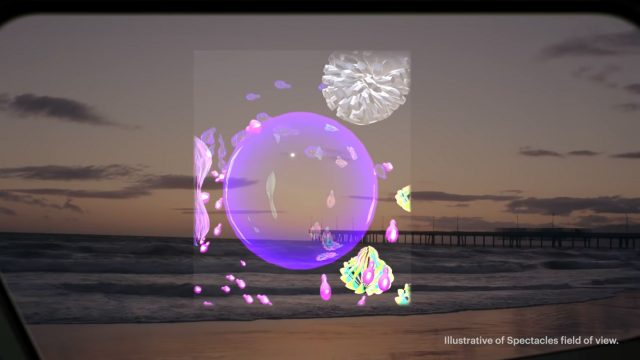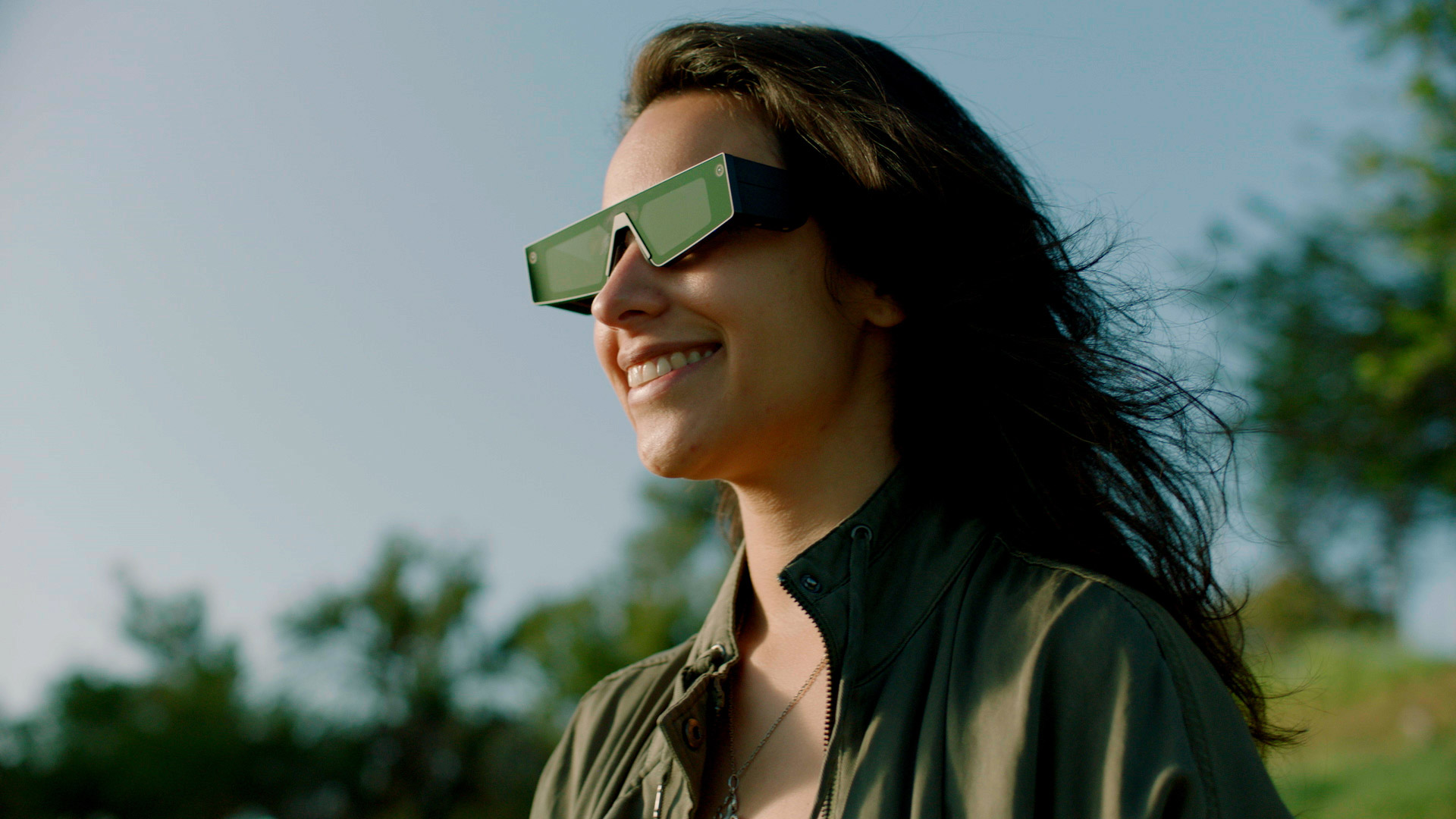Snap Inc, the company behind Snapchat, today announced its 4th generation Spectacles glasses. While the prior generations included only cameras for capturing first-person footage, the 4th generation Spectacles are the company’s first to include a display for real-time AR.
Also unlike previous versions of Spectacles, the 4th-generation is not currently available for sale. Snap is positioning this version of the AR glasses as a development kit for creators to begin experimenting with building AR experiences for the device.
Unlike Microsoft or Magic Leap’s approach—which have traded some bulkiness for greater capabilities—Snap is taking a form-over-function approach by starting with a form-factor that consumers would find reasonable, even if that means paring down some of its capabilities. Here’s a look at the 4th-gen Spectacles’ specs (including which critical info we don’t yet know):
| Snap Spectacles (4th-gen) Specs | |
| Resolution | Unknown |
| Refresh Rate | Unknown |
| Lenses | Unknown waveguide (2,000 nits) |
| Field-of-view | 26.3° diagonal |
| Optical Adjustments | Unknown |
| IPD Adjustment Range | Unknown |
| Processor | Snapdragon XR1 |
| RAM | Unknown |
| Storage | Unknown |
| Connectors | USB-C |
| Battery Life | 30 minutes (case holds up to four charges) |
| Tracking | Inside-out (no external beacons) |
| On-board cameras | 2x RGB |
| Input | Touchpad, voice, hand-tracking |
| Audio | Internal speakers |
| Microphone | Yes (4x) |
| Weight | 134g |
As you can see, the compromises to reach this lightweight form-factor were not inconsequential. Notable is the miniscule 26.3° diagonal field-of-view. To put that into perspective, a small field-of-view is among the chief complaints levied at HoloLens 2—and it has a 52° diagonal field-of-view.
But hey, props to Snap for making an effort to show how limited the field-of-view is in its promotional materials. In the reveal video above, the company very intentionally showed six individual shots illustrating both a limited field of view and an approximation of the transparency that you’d see through the glasses. Respect.

It’ll be a serious challenge for developers to squeeze meaningful applications into that tight field-of-view without making the user feel like they need to hunt around the scene just to spot the content through the tiny window.
The other big point in the specs is the 30 minute battery life, which will make them feel more like a dedicated-use device than something you use because you just happen to be wearing it. The battery-case, which can hold up to four charges, offsets that pain a bit (hey, you don’t wear sunglasses all day anyway). Even as battery life improves in the future, the battery-case is a smart idea that I wouldn’t be surprised to see in the cases of other AR glasses going forward.
Clearly these are both major reasons why Snap isn’t ready to sell these AR glasses to the public, as it has done with its prior Spectacles. In time we’ll see these capabilities grow and eventually make future Spectacles practical for end-users.
As for actually building content for the 4th-gen Spectacles, Snap is of course relying on its Lens Studio software which has long allowed developers to build AR experiences for use with phones on Snapchat.
According to a piece by Wired, Snap plans to send out around 1,000 of its AR glasses to developers. If you’re interested, you can apply to get your own at the bottom of the official 4th-gen Spectacles website.
